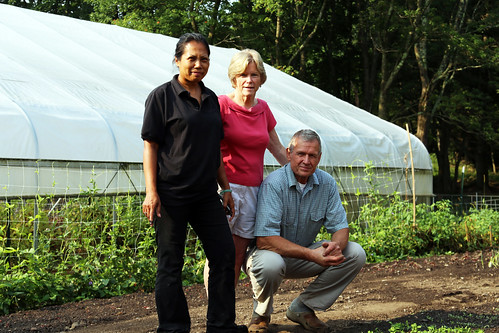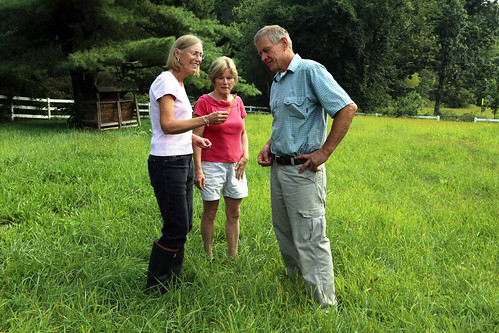
When Jim and Nancy Faulkner bought their small farm in Boxborough, Mass. in 2009, the place was a mess. Buildings were falling down, the soil was poor and the land was covered with invasive plants. Nonetheless, they wanted to turn it into a sustainable farm.
Help came from two very different directions: a government agency and another small farmer.
“I really needed a farm plan,” said Jim Faulkner, who wanted to ensure he complied with town bylaws. “I wanted to show that I was serious and that I had a plan.”
So, he went to his local office of USDA’s Natural Resources Conservation Service. There Faulkner met Liz McGuire, a conservation planner with the Massachusetts Association of Conservation Districts, which works with NRCS to provide conservation planning to farmers.
“We talked about what kind of soil it is, and what it had the potential for,” said McGuire, adding that invasive buckthorn, bittersweet and multiflora rose were flourishing.
“We started by clearing invasive plants,” said Faulkner, who enlisted goats to do the job. “Then we started to improve the soil health.
Faulkner worked the land alone for a few years, raising chickens and growing vegetables. Then he met Phalla Nol, whose family farmed in Cambodia before they immigrated to the United States. She was looking for land to farm, and Faulkner was looking for someone with farming expertise. So, with the help of the New Entry Sustainable Farming Project, which assists new immigrant farmers in finding land, they struck a deal.
“We grow Chinese broccoli, pea tendrils, long beans, bok choy, yu choy, all kinds of choy,” Nol said, laughing. She sells the produce at local farmers’ markets and shares it with the Faulkners.
A couple of years earlier, Faulkner had received funding through NRCS for a high tunnel. “With the high tunnel and row covers, I was taking spinach out of it in January,” said Faulkner.
Seasonal high tunnels are plastic-covered structures that enable farmers to have crops ready earlier or later in the season. In high tunnels, plants are grown directly in the ground, and the sun’s heat regulates the temperature inside. Plus, Faulkner says that water efficiency is much better.
High tunnels are a cornerstone of USDA’s Know Your Farmer, Know Your Food Initiative, which coordinates USDA’s work on local and regional food systems. Since 2009, through NRCS, USDA has provided assistance to help producers construct over 13,000 high tunnels on farms around the country.
“Most of my knowledge comes from NRCS to tell you the truth,” Faulkner said. “And I’ve been lucky enough to watch Phalla and her family. They’re pretty good at it.”
The admiration is mutual. “He’s just like my dad was; he loved farming,” said Nol.
To get started with NRCS, visit your local USDA Service Center or www.nrcs.usda.gov/GetStarted.

